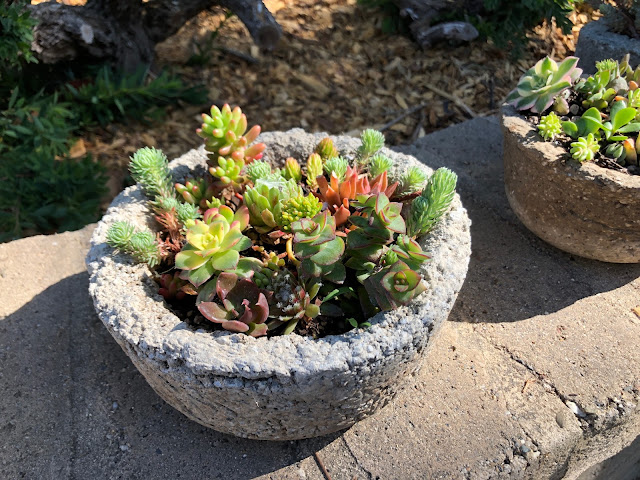
Master gardeners schedule free Zoom class

|
|
Succulents are easy-care plants, once their few needs are understood. Learn all about them in
an online class from the Sacramento County master gardeners. (Photo: Kathy Morrison)
|
You're probably aware that succulents have been leading the trends for plants the past few years. But do you know your Dudleya caespitosa from your Crassula muscosa ?
Gardeners who want to learn more about these intriguing, easy-care plants will want to sign up for a free lunchtime Zoom class scheduled 12:15 -1 p.m. Thursday, April 8.
"Get Sharp: Introduction to Cacti and Succulents" will be taught by UCCE Sacramento County master gardeners Andi MacDonald and Theresa Roberts. They plan the online class to include:
-- An overview of succulents including cacti and euphorbia.
-- The features that make them versatile plants to grow in containers and in the landscape.
-- Tips and demonstrations on essential care and cultivation practices.
-- Common problems and solutions.
-- Learn which varieties are well suited for the Sacramento area.
There is no cost, but registration is required. Register here . Students will receive a confirmation email and a link to the class. The Zoom session will open at noon and instruction will begin at 12:15 p.m.
Dudleya caespitosa, incidentally, is part of the large Dudleya family and a California native; one of its common names is sea lettuce. Crassula muscosa is known as watch chain plant.
To find out more from the Sacramento County master gardeners, including their many garden guides and tips, visit http://sacmg.ucanr.edu/
-- Kathy Morrison
Comments
0 comments have been posted.Sacramento Digs Gardening to your inbox.
Food in My Back Yard Series
April 1: Don't be fooled by these garden myths
March 25: Fertilizer tips: How to 'feed' your vegetables for healthy growth
March 18: Time to give vegetable seedlings some more space
March 11: Ways to win the fight against weeds
March 4: Potatoes from the garden
Feb. 25: Plant a fruit tree now -- for later
Feb. 18: How to squeeze more food into less space
Feb. 11: When to plant? Consider staggering your transplants
Feb. 4: Starting in seed starting
Sites We Like
Garden Checklist for week of March 30
Your garden doesn’t mind April showers. Get busy now to enjoy those future flowers.
* Get ready to swing into action in the vegetable garden. As nights warm up over 50 degrees, start setting out tomato, pepper and eggplant transplants.
* From seed, plant beans, beets, cantaloupes, carrots, corn, cucumbers, melons, pumpkins, radishes and squash. (Soak beet seeds overnight in water for better germination,)
* Plant onion sets.
* In the flower garden, plant seeds for asters, cosmos, celosia, marigolds, salvia, sunflowers and zinnias.
* Transplant petunias, zinnias, geraniums and other summer bloomers.
* Plant perennials and dahlia tubers for summer bloom.
* Transplant lettuce and cabbage seedlings.
* April is the last chance to plant citrus trees such as dwarf orange, lemon and kumquat. These trees also look good in landscaping and provide fresh fruit in winter.
* Smell orange blossoms? Feed citrus trees with a low dose of balanced fertilizer (such as 10-10-10) during bloom to help set fruit. Keep an eye out for ants.
* Apply slow-release fertilizer to the lawn.